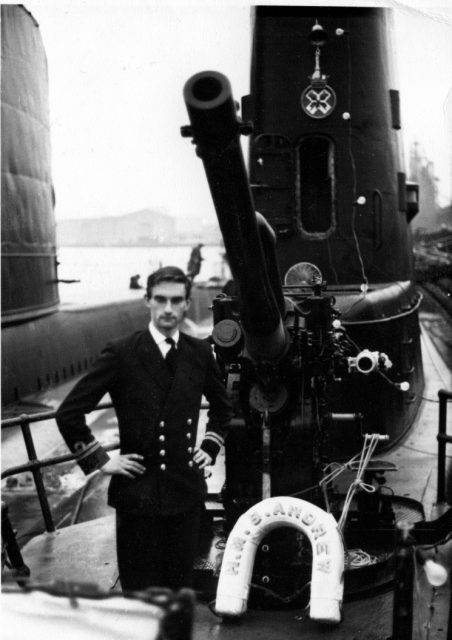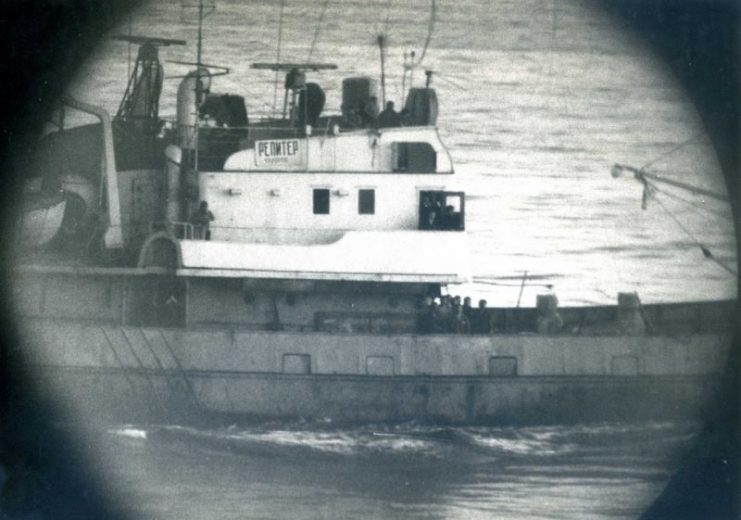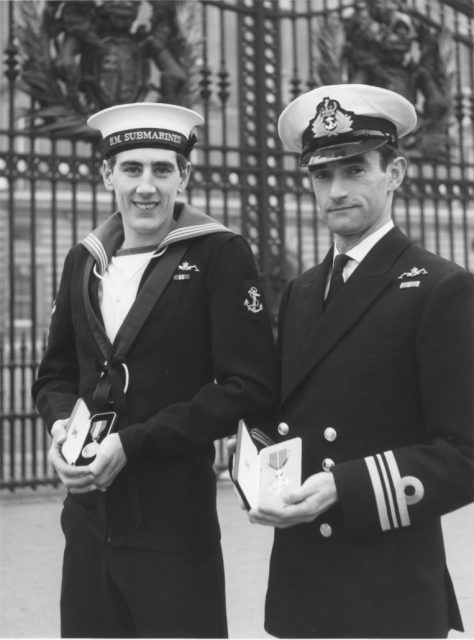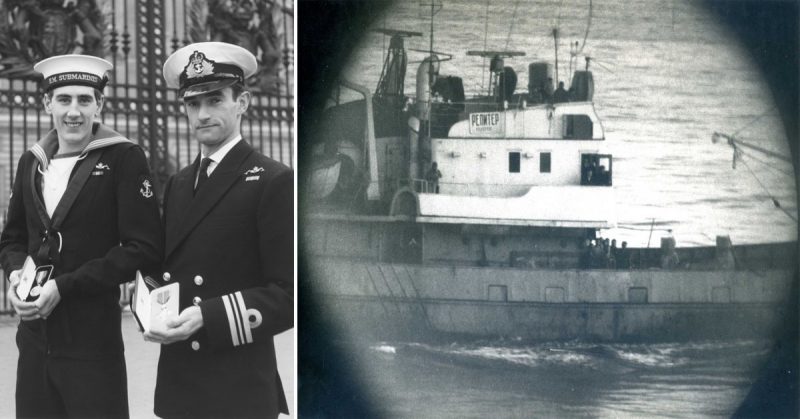The following edited extract is taken from the book ‘On Her Majesty’s Nuclear Service’ by Eric Thompson MBE, a memoir of his time spent working in the top-secret nuclear submarine service.
On return to the River Clyde, we were tasked with investigating a mysterious Soviet spy trawler. This vessel had kept permanent station between Ireland and the Mull of Kintyre throughout the Cold War. Its role was to monitor communications and submarine movements in and out of the Clyde, both British and American. We also assumed it was relaying our submarine movements to a Soviet submarine waiting in the wings to the west of Ireland. The Soviets were attempting to track our Polaris submarines leaving the Clyde. The spy trawler could never have been mistaken for an innocent fishing boat because it was festooned with aerials and had no fishing gear. We could see what it had above the waterline. The big question was: what did it have underneath? Our job was to find out.
As we rounded the Mull of Kintyre on the surface, I sighted it sitting in its usual position, drifting on the tide. It would sit there for months on end and I wondered what on earth its crew did to pass the time. Probably they were revelling in the joys of British or Irish television, which must have been vastly more entertaining than the propaganda-riddled, State-controlled, Soviet equivalent. Our plan was to ascertain its exact location, head out to sea, dive, circle back and do a covert under-run. When it saw us, it got underway and headed towards us. I duly informed Mike Harris of its approach.

It passed close by on a reciprocal course down our starboard side, did a U-turn under our stern and came up parallel with us a hundred metres off the port side. I could examine it in minute detail. It had a very much larger crew than was normal for a trawler of its size and most of them seemed to have come up on deck to see us. The number of women crewmembers was a surprise but I saw no gorgeous, blonde, Julie-Christie-like Lara, as in Doctor Zhivago; these women looked like navvies and wore overalls with industrial aprons. It was strange to see ‘the enemy’ at such close quarters; they were fellow human beings and looked a pretty poor lot. I felt sorry for them and wondered at the low quality of their lives in a Communist-controlled state.

A man then came out on their bridge wing and trained a loudspeaker at us. Within minutes, it was pumping out strict tempo dance music. How amusing. We were in the Beatles-Elvis Presley-Rolling Stones rock ‘n roll era and they were playing the dance music of my parents generation. Was this a joke or were they trying to impress us with Soviet cool? Were they trying to establish a rapport with fellow seafarers or was it a poorly calculated act of Soviet propaganda? I’d like to think the former.
Mike Harris, the commander of the submarine, arrived on the bridge. ‘Ignore them,’ he said. ‘Look straight ahead. If we were loitering off Archangel, I’d wave to them but not here.’

The Captain, the lookout and I, three steely-eyed submariners all wearing uniform navy-blue berets and white roll-neck submarine sweaters, were staring grim-faced straight ahead while within hailing distance, a Soviet spy trawler was bombarding us with dance music. We increased speed and pulled away but as soon as we were over the horizon, we dived and returned, this time passing directly underneath the AGI and photographing what she was hiding under her skirts. It turned out that she had a torpedo tube! That was a surprise. Legally speaking, it made her a warship. As we had passed a mere two metres beneath her hull, she must have detected us for she increased speed and by the time we had returned for a second look, we were into a high-speed underwater chase.

Copies of ‘On Her Majesty’s Nuclear Service’ can be found HERE for the UK and Europe and HERE for the United States.
Eric Thompson
“On Her Majesty’s Nuclear Service”
Published by Casemate UK
* All photos provided by the author.
